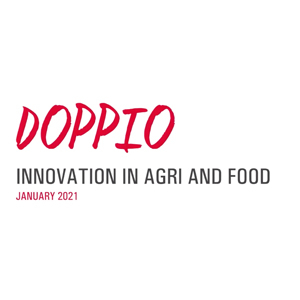Why can taking the road lesser travelled lead to a more financially rewarding experience?
Many companies with a protracted history of success generally follow a tried and tested recipe for future sustainability. One such example is the application of project ranking or prioritization techniques for portfolio selection under conditions of constrained budgetary and other resources. While this has doubtless led to various degrees of success, a handful of industries – most notably oil and gas, Pharma & Biotech, and insurance – that exist in environments of high risk and uncertainty, have turned to another form of portfolio selection – optimization – to extract maximum value from their constrained resources. This lesser travelled path, as demonstrated by the case study of Large Biopharma below, far more often than not, is superior to project prioritization and minimizes or eliminates portfolio value destruction.
Unlike conventional wisdom, achieving greater portfolio returns does not necessarily mean assuming more risk; rather, it points to adopting practices that demand and ensure greater portfolio efficiency.
Old habits die hard but is ‘good enough’ really good enough for your organization?
In an era of unprecedented cost cutting and truly global competition, how long can an organization fail to take control of its own destiny by not focusing on what it can control – the value of its portfolio? True enough, several decisions based on heuristic analysis done on the back of a napkin alone, have led to blockbuster success while a sophisticated, computer-aided, quantitative analysis does not guarantee success. However, what good analysis really offers is the opportunity to make transparent, defensible decisions that increase the likelihood of portfolio success, over and over again.
Dispensing with the tried and tested is seldom a comfortable or easy accomplishment until it can be shown why the road that brought us here may not be the best path to our ultimate destination. This is precisely what the case study below hopes to achieve in orienting organizations away from ‘satisfaction guaranteed’ toward ‘maximization guaranteed’.
If you kick out the old, what’s new and proven?
CREOPMTM is a holistic Portfolio Management framework described by Bayney & Chakravarti in ‘Enterprise Project Portfolio Management – Building Competencies For R&D And IT Investment Success’ (J. Ross; 2012) that has been successfully applied to both large and small R&D and commercial organizations across Pharma & Biotech, Medical Devices & Diagnostics, Consumer Care, and Agriculture (Fig. 1) and can be described as follows:

Figure 1 – CREOPMTM Portfolio Management framework.
Categorize – determine what project investments you’re obligated to begin or continue (non-discretionary), what you really shouldn’t be working on (discretionary), and what you’d like to work on if you had sufficient resources (discretionary). This way, your portfolio should always have what you need but may not always have what you want.
Analyze Risk – if you invest in projects that bear risk and uncertainty that can’t be mitigated, quantify both to determine the extent to which project success and commercial viability could be impacted. Remember: simply ignoring risk or uncertainty doesn’t make either disappear!
Evaluate – since not every project you work on will succeed because of technical and regulatory hurdles, conduct a defensible risk-adjusted valuation that incorporates benefit (value), risk, cost, and time. Note: ‘defensible’ means being approximately correct rather than precisely wrong.
Optimize – extract the highest value you can from your portfolio and make the tough decisions based on financial value gained or lost. Don’t obfuscate your decision-making process by needless pontification over everything you’d like to have. It’s worth remembering that the more of everything you want, the less of any one thing you’ll eventually have.
Prioritize – since everything can’t be done at the same time, use a defensible methodology to set operational priorities. But, don’t be lulled into thinking that a list of priorities determines your best portfolio; far too often, there’s greater value to be gained from projects that lie ‘below the proverbial cutoff line’. So, here’s the key – prioritize within your optimized portfolio.
Manage – after all is said and done, you need to keep a watchful eye on risks that should be managed, resources that must be accounted for, and stakeholders who can help make critical ‘Go – No Go’ decisions. Finally, never be satisfied with your Portfolio Management capability maturity level because, if you won’t reach for the heavens, what are they there for?
Case Study – Large Biopharma
Large Biopharma had a ‘problem of riches’ – because of resource limitations, it simply couldn’t afford to pursue every project in its portfolio. But, what a great problem to have! Each of the 10 projects had a need for budget and 2 critical human resources in 2016 and, if sufficient resources were available, the portfolio would be worth $6.245B on a risk-adjusted NPV (eNPV) basis (Fig. 2).

Figure 2 – The portfolio of projects at Large Biopharma.
A common practice – and, in fact, Large Biopharma’s choice to solving this problem – was to rank order projects on the basis of risk-adjusted value until one or other resource limit was met (Fig.3). This tried and tested method yielded a portfolio valued at $3.195B. A good portfolio, isn’t it?

Figure 3 – Value creation using project prioritization.
Was it the best portfolio and, if it wasn’t, how much financial value was likely to be destroyed by the prioritization solution presented in Fig. 3? To answer this question, a different approach was required – finding the best or optimal portfolio that created the highest financial value (Fig.4).
Unlike the solution presented in Fig.3 where only the top 4 projects were selected by rank ordering, the alternative solution (i.e. path lesser traveled) shown in Fig.4 de-selected 2 of the top 4 projects but yielded $3.995B in risk-adjusted financial value by pursuing a total of 7 of the 10 projects.

Figure 4 – Value maximization using portfolio optimization.
If ‘good enough’ was good enough for Large Biopharma, the company would never have known that it was destroying value to the tune of $800M while staying within its resource limitations. While there is no magic whatsoever to arriving at the second solution, the secret lies in a basic but powerful concept in Economics – the Efficient Frontier (Fig.5). For any given level of resource (e.g. budget) there is a portfolio that creates maximum value (i.e. an efficient or optimal portfolio) and lies on the Efficient Frontier. As can be deduced from Fig.5, portfolio C is better than portfolio A because it generates greater reward (value). Similarly, portfolio B is better that portfolio A because, for the same level of reward, much less resource is needed. To re-state an earlier point, a portfolio comprised of prioritized projects (often mistakenly referred to as a ‘prioritized portfolio’) seldom generates the same value as an optimal portfolio.

Figure 5 – The economic Efficient Frontier.
Key ingredients for success – Build one block at a time, and practice, practice, practice
Several distractions (e.g. re-structuring) and excuses (e.g. a focus on next year) generally get in the way of this adoption to portfolio optimization that represents the best of Portfolio Management practice but the pertinent question is ‘If you were the CEO of your company, would you tell your shareholders that your intent was to create sub-optimal portfolio value on an ongoing basis?’ If not, what would you do differently?
Like all exceptional athletes who achieve excellence in their fields, they build their skills one block at a time and practice relentlessly. This should be no different for organizations trying to attain sustained competitive success, however it may be defined. The first step is to admit that no matter how good or successful you currently are, you’d like to be better or more successful at what you do in the future. With a transparent gap analysis in place, you should then create a multi-year plan dedicated to improving your capability maturity level in value creation i.e. in the discipline of Portfolio Management. If one sit-up or one pill does not lead to perfect cardiovascular health, do not expect that one cycle of implementation will lead to portfolio value maximization. Instead, practice the discipline relentlessly because if you don’t create your own destiny, someone else surely will.
Conclusions
Long before the turn of this century, forward thinking and learning organizations alike began to examine the root causes of their successes and failures, and resorted to implementing fundamental changes that have led to sustained competitive success. Those that simply moved the deck chairs on the Titanic found themselves acquired, marginalized, or belly-up. Re-invention of oneself requires an admission that more than today’s self is required for tomorrow’s success.
And so it is with Portfolio Management that organizations struggle to maximize the value of what they have in their portfolios when the pervasive Pavlovian response is to be satisfied with the concept of value creation. CREOPMTM does not require organizational re-structuring or cost cutting to be successful; rather, it requires first and foremost, the recognition that more value can be extracted from the resources available to a portfolio if a value maximization approach is pursued. Organizations that embrace this discipline will find themselves at the forefront of their industries because they will have eliminated value destruction and re-invested more into their futures. While portfolio optimization is not a journey of a thousand miles, it does begin with a single step in the direction of value maximization.





